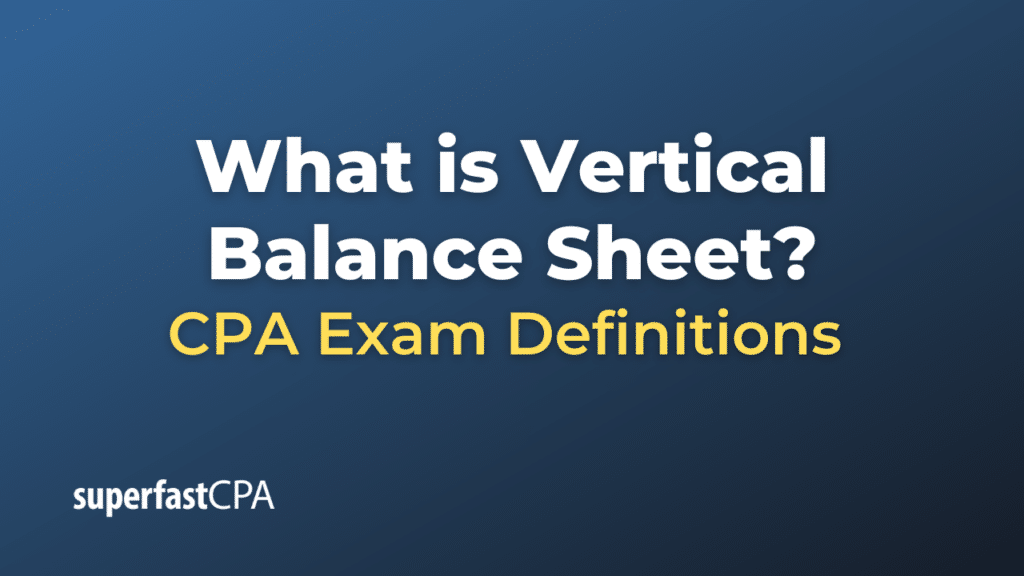Vertical Balance Sheet
A vertical balance sheet is a presentation of the balance sheet where each line item is listed as a percentage of the total assets. In other words, all assets, liabilities, and shareholders’ equity items are expressed relative to the total assets of the company. This is a form of vertical analysis and is particularly useful for understanding the composition and proportionality of an entity’s financial position.
By converting these amounts to percentages, it’s easier to make both internal comparisons (e.g., how the proportion of long-term debt to total assets has changed over time) and external comparisons (e.g., how the company’s proportion of long-term debt compares to other companies in the same industry).
Example of Vertical Balance Sheet
Let’s consider a hypothetical example to demonstrate a vertical balance sheet. We’ll use a company named “Example Corp” and its balance sheet as of December 31, 2022.
Balance Sheet of Example Corp as of December 31, 2022 (in dollars)
Assets
- Current Assets: $50,000
- Cash: $20,000
- Accounts Receivable: $30,000
- Fixed Assets: $150,000
- Machinery: $100,000
- Buildings: $50,000
- Total Assets: $200,000
Liabilities
- Current Liabilities: $40,000
- Accounts Payable: $30,000
- Short-term Loans: $10,000
- Long-term Liabilities: $60,000
- Long-Term Debt: $60,000
- Total Liabilities: $100,000
Equity
- Common Stock: $50,000
- Retained Earnings: $50,000
- Total Equity: $100,000
Vertical Balance Sheet Analysis
To convert this into a vertical balance sheet, we express each line item as a percentage of Total Assets, which in this case is $200,000.
Assets
- Current Assets: $50,000 / $200,000 x 100 = 25%
- Cash: $20,000 / $200,000 x 100 = 10%
- Accounts Receivable: $30,000 / $200,000 x 100 = 15%
- Fixed Assets: $150,000 / $200,000 x 100 = 75%
- Machinery: $100,000 / $200,000 x 100 = 50%
- Buildings: $50,000 / $200,000 x 100 = 25%
- Total Assets: 100%
Liabilities
- Current Liabilities: $40,000 / $200,000 x 100 = 20%
- Accounts Payable: $30,000 / $200,000 x 100 = 15%
- Short-term Loans: $10,000 / $200,000 x 100 = 5%
- Long-term Liabilities: $60,000 / $200,000 x 100 = 30%
- Long-Term Debt: $60,000 / $200,000 x 100 = 30%
- Total Liabilities: 50%
Equity
- Common Stock: $50,000 / $200,000 x 100 = 25%
- Retained Earnings: $50,000 / $200,000 x 100 = 25%
- Total Equity: 50%
In this vertical balance sheet, you can see that:
- Current assets make up 25% of the total assets, which may suggest liquidity.
- Fixed assets account for 75% of the total assets, highlighting the company’s long-term investment.
- Liabilities finance 50% of the assets, indicating a 1:1 ratio between liabilities and equity for financing assets.
- Common Stock and Retained Earnings each account for 25% of the total assets, giving insight into how equity is structured.
By using this vertical format, the company can easily compare its financial structure over time or with other companies, regardless of size.













